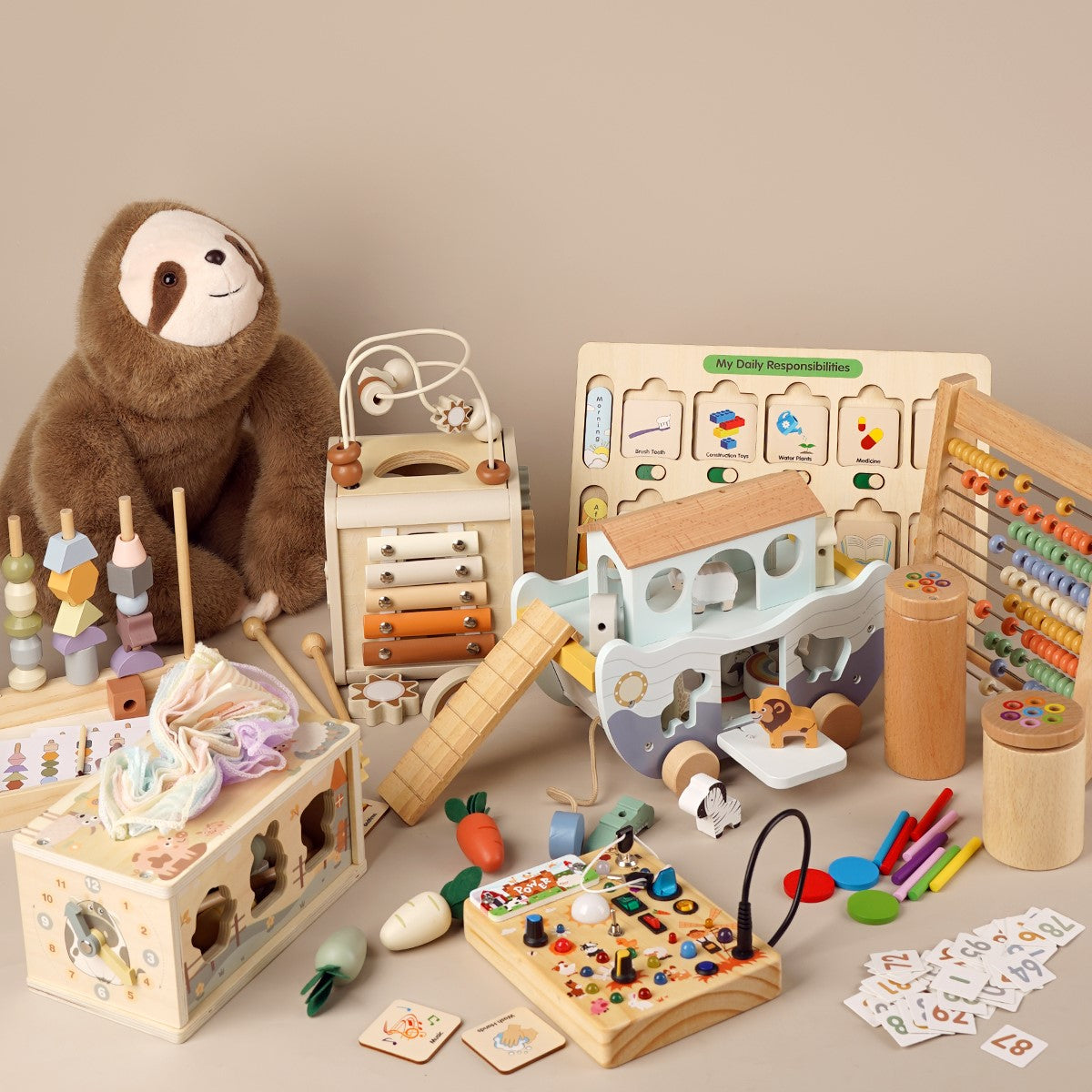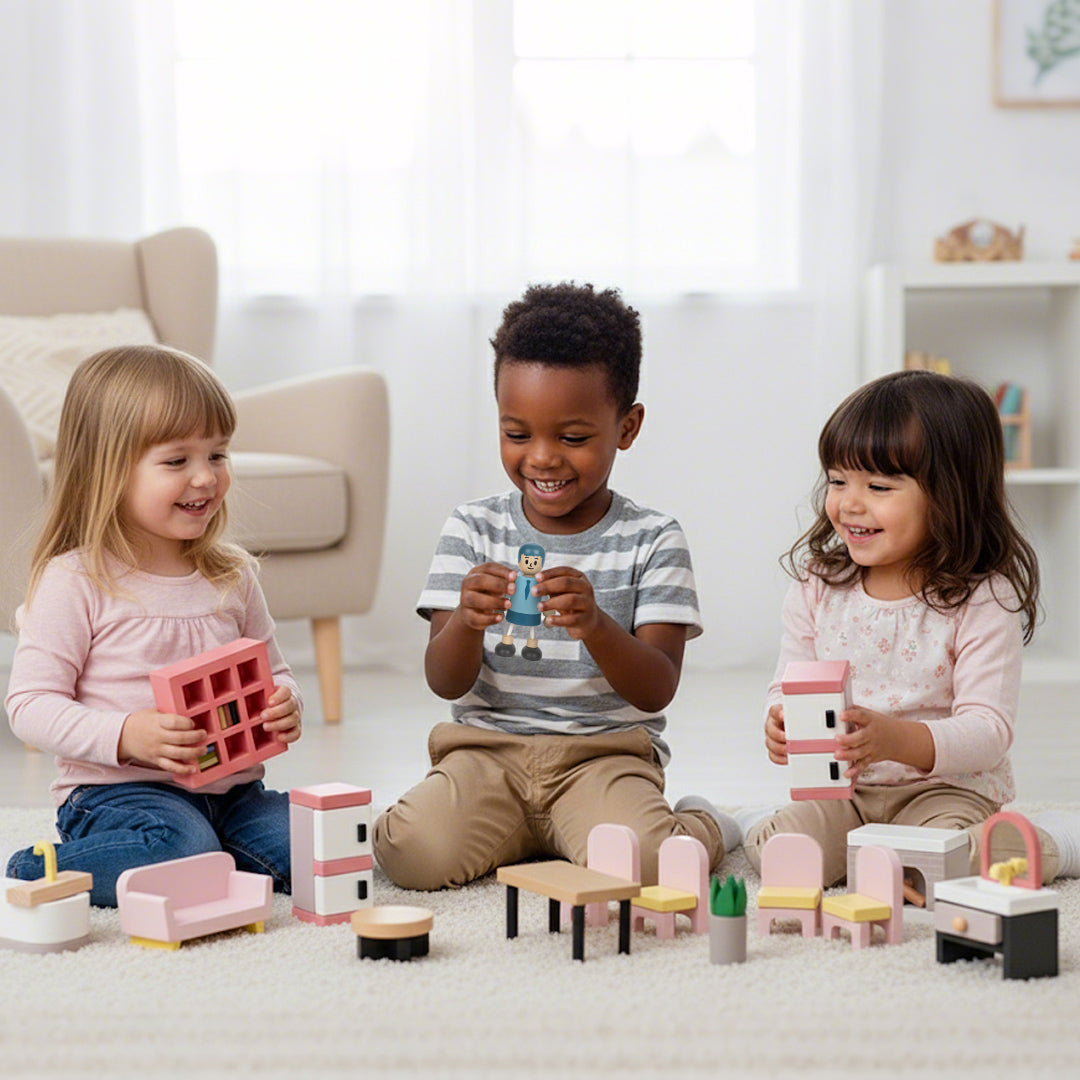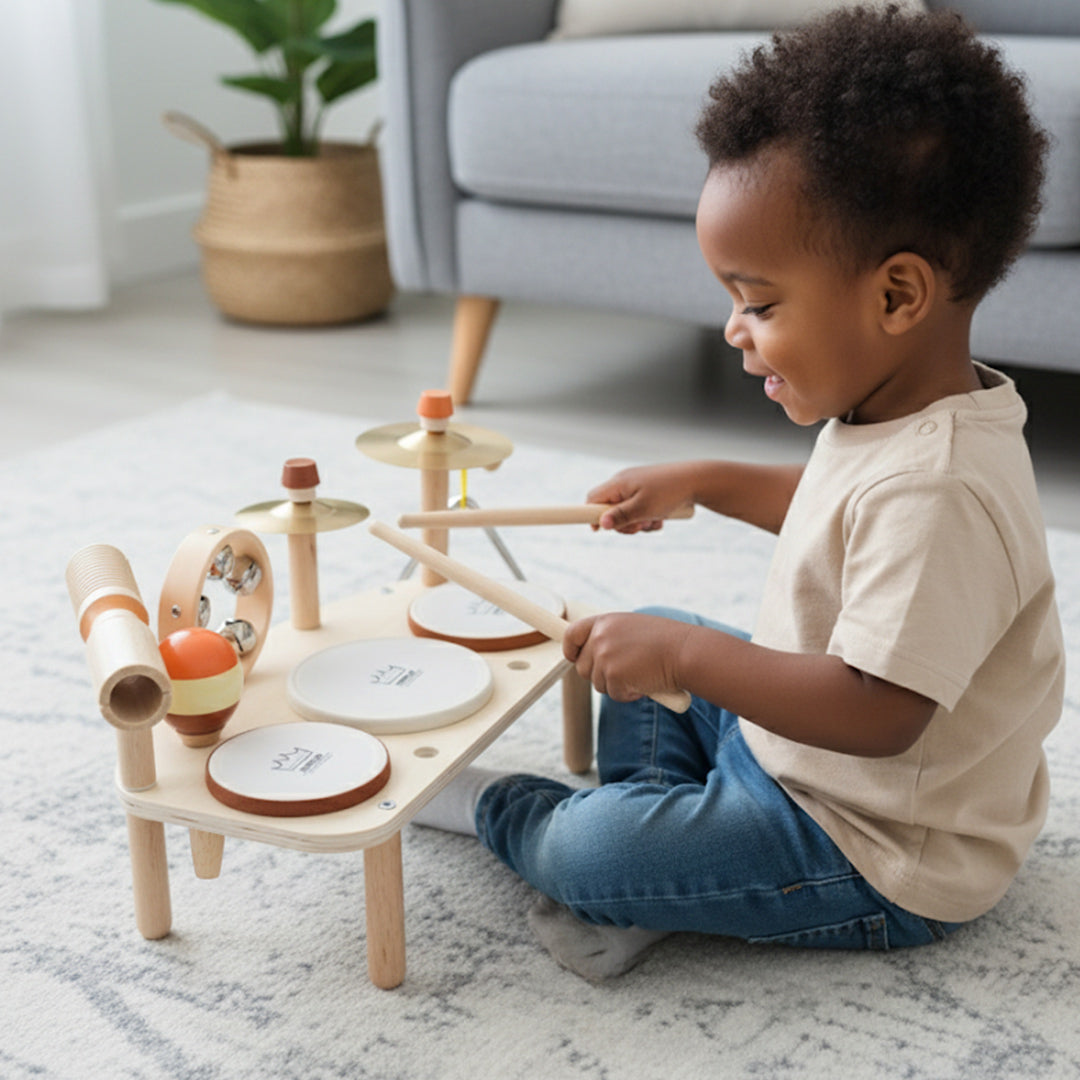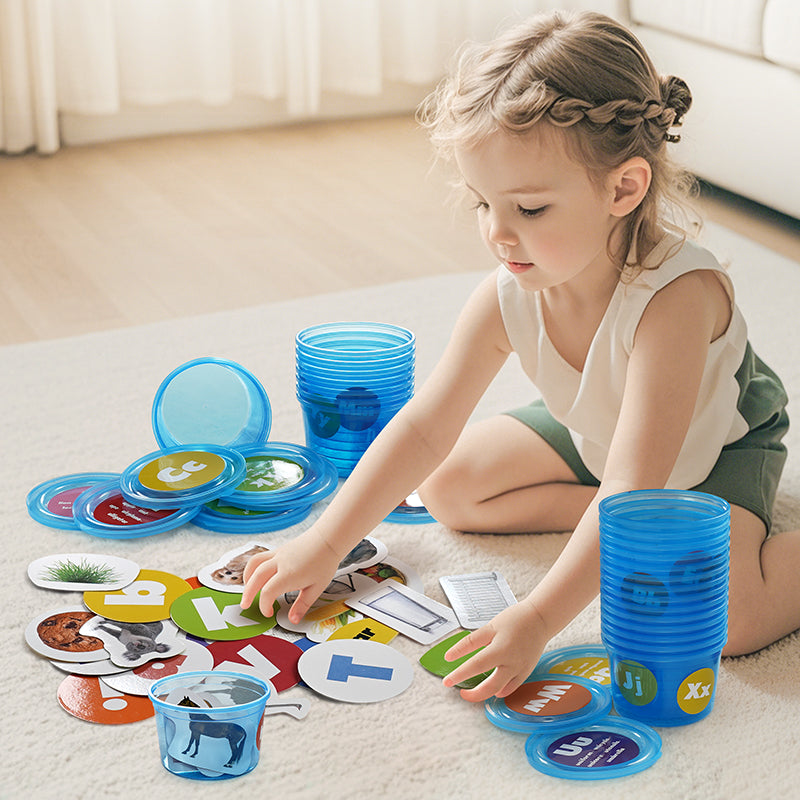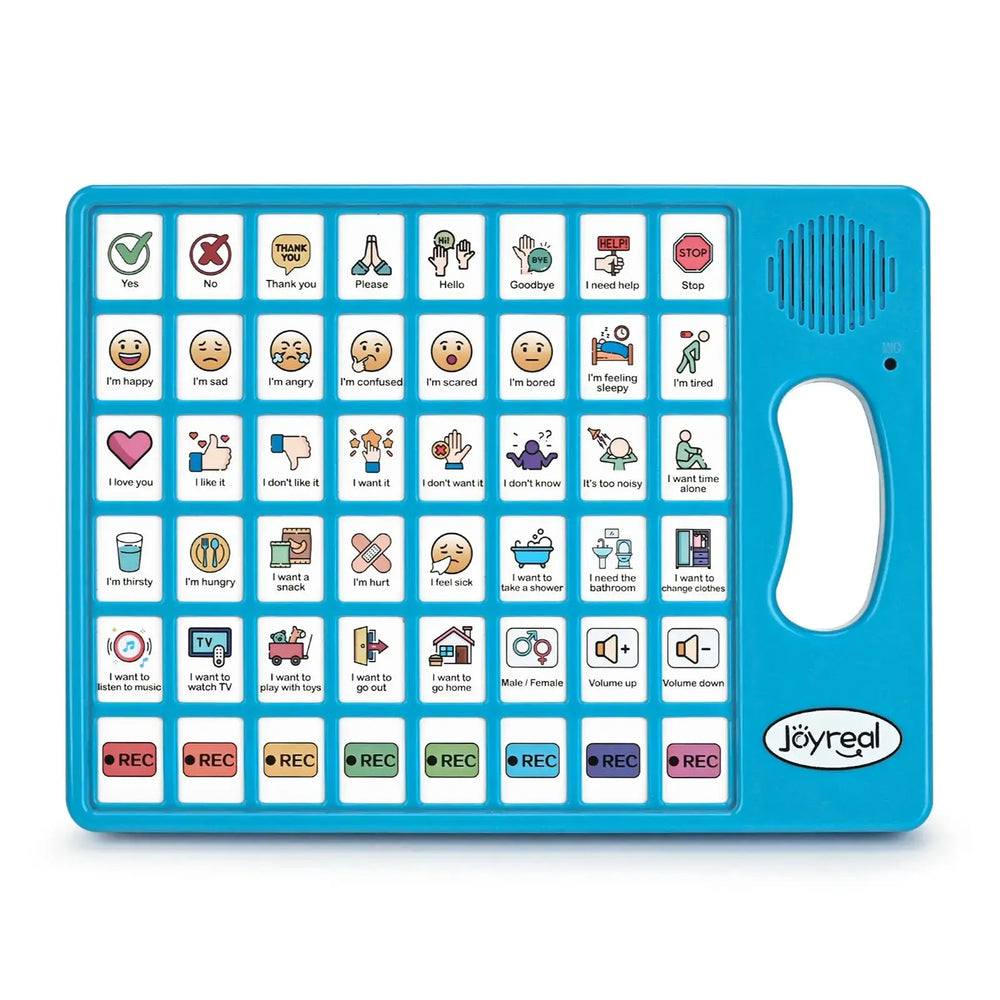Can Montessori Toys Help with Speech Development? A Parent’s Guide

When your toddler is learning to talk, every giggle, babble, and first word feels like magic. But sometimes, parents wonder: Can toys really support speech development? The answer is yes—and Montessori toys in particular can be powerful tools for building early language skills.
By combining Montessori principles with toddlers sensory toys , caregivers can create playful environments that encourage vocabulary growth, focus, and interaction. For children with developmental differences, including autism, even autism sensory toys and supportive tools like AAC devices for autism can work alongside Montessori play to strengthen communication.
Understanding Speech Development in Toddlers
Children develop speech at their own pace, but there are some general milestones. Around the first birthday, most little ones say their first words. By two years old, they may start stringing two or three words together.
Speech growth doesn’t just depend on age. Environment, daily interactions, and sensory experiences all play a big role. Toddlers need exposure to real words, real objects, and plenty of opportunities to practice.
What Makes Montessori Toys Unique for Learning?
Hands-On Exploration and Real-Life Skills
Unlike battery-powered toys, Montessori toys mimic real-life experiences. A wooden spoon, toy broom, or puzzle piece encourages children to connect words with objects they use daily.
Simplicity vs. Overstimulation
Montessori toys are intentionally minimalistic. Without flashing lights or loud noises, toddlers can focus on listening and speaking rather than being passively entertained.
The Role of Sensory Play in Language Growth
Sensory exploration—touching textures, hearing sounds, and moving parts—helps children describe their experiences, building early vocabulary.
How Montessori Toys Support Speech Development
Encouraging Imitation and Vocabulary Building
When a toddler plays with a Montessori kitchen set, they’re more likely to repeat words like “cup,” “spoon,” or “pour,” connecting speech with action.
Strengthening Fine Motor Skills Linked to Speech
Fine motor development (buttoning, latching, zipping) supports coordination that indirectly aids speech by strengthening oral motor pathways.
Promoting Focus and Active Listening
Because Montessori toys are less distracting, children learn to listen attentively and respond—critical steps in communication.
Social Interaction Through Play
Montessori toys often invite cooperative play, giving toddlers a chance to practice turn-taking and conversational skills.
Best Montessori Toys for Speech Development
Montessori toys encourage speech growth by linking everyday actions with words, strengthening motor skills, and creating opportunities for social play. For example, montessori busy board with zippers and latches let caregivers introduce action words like “open,” “turn,” or “lock.” Wooden puzzles and object-to-word matching games help toddlers connect pictures and real objects to spoken vocabulary, reinforcing recognition and pronunciation. Musical Montessori toys build rhythm and phonetic awareness through repetition, while practical life play sets—like pretend cooking or cleaning—introduce real-world words children can use daily.
Beyond vocabulary, these toys also support fine motor development, which is closely tied to speech. Buttoning, stacking, and manipulating small objects improve coordination that benefits both hand control and oral motor skills. Because Montessori toys are simple and distraction-free, they encourage listening and focus, giving toddlers more chances to absorb new words. Many are also designed for shared play, making them excellent tools for practicing turn-taking, imitation, and early conversations.
For children on the autism spectrum, integrating autism sensory toys into Montessori play can provide both calming sensory input and valuable opportunities for communication practice.
How Parents Can Use Montessori Toys for Speech Practice
Parents play the most important role in helping toddlers turn playtime into a language-learning experience. Montessori toys, along with sensory toys for toddlers, can be powerful tools when used intentionally. Here are some practical ways to boost speech development at home:
- Talk through playtime: Narrate what your toddler is doing—“You’re stacking the blocks” or “You’re turning the wheel.” Naming each object and action clearly helps children connect words with meaning.
- Repeat often: Repetition builds memory. For example, using a busy board daily gives toddlers many chances to practice words like “zip” or “open.”
- Create a language-rich environment: Pair Montessori toys with songs, books, and storytelling. Even autism sensory toys and communication supports, such as AAC devices for autism, can be combined with play to encourage vocabulary growth.
- Balance play and screen-free time: Too much screen exposure can slow speech progress. Hands-on toys like puzzles, busy boards, and sensory bins invite real interaction and active communication.
- Make it fun and engaging: Speech practice shouldn’t feel like a lesson. Pretend cooking sets, musical instruments, or matching games make learning natural and enjoyable.
Conclusion
Yes, Montessori toys can play a meaningful role in supporting speech development. They don’t replace conversations, songs, or storytelling, but they provide the perfect setting for children to connect words with actions, practice sounds, and build vocabulary.
For children with additional needs, pairing Montessori play with autism sensory toys or supportive tools like AAC devices for autism ensures that every child has the opportunity to communicate in a way that works best for them.
With the right balance of play and interaction, Montessori toys can help toddlers become confident communicators—one word at a time.
👉 For more resources on Montessori learning, visit the:https://joyrealtoys.com/blogs/news/tagged/montessori-method
Maybe it will be helpful for you:
Recent Post

What Finally Helped My Toddler Speak Up?
If you’re a toddler mom, you already know how much emotional weight...

Joyreal Christmas Toys Deals 2025
Enjoy instant savings across nearly every category, from early lear...

How Wooden Montessori Toys Support a Sustainable Childhood
Most parents don’t say it out loud, but many feel the same quiet fr...

Top Christmas Gifts to Help Kids Communicate Better This Holiday Season
The holiday season brings joy, family bonding, and endless opportun...

How to Make DIY Printable Communication Boards
Communication is at the heart of every child’s development — and fo...

Top 5 Christmas Gifts That Bring Families Closer (2025 Guide)
Christmas isn’t just about the gifts — it’s about the moments we c...

Top Musical Christmas Gifts for Toddlers & Preschoolers 2025
Why Musical Gifts Are Perfect for Toddlers and Preschoolers Music h...

Joyreal AAC Devices Wholesale Partner
In today’s educational and therapeutic environments, speech therapi...

Joyreal AAC Device – Big Sale for Autism & Speech
Every Voice Deserves to Be Heard Imagine your child looking up at y...

How to Choose Safe & Educational Toys for Christmas 2025
When “Just a Toy” Means So Much More If you’re a parent, you know t...
